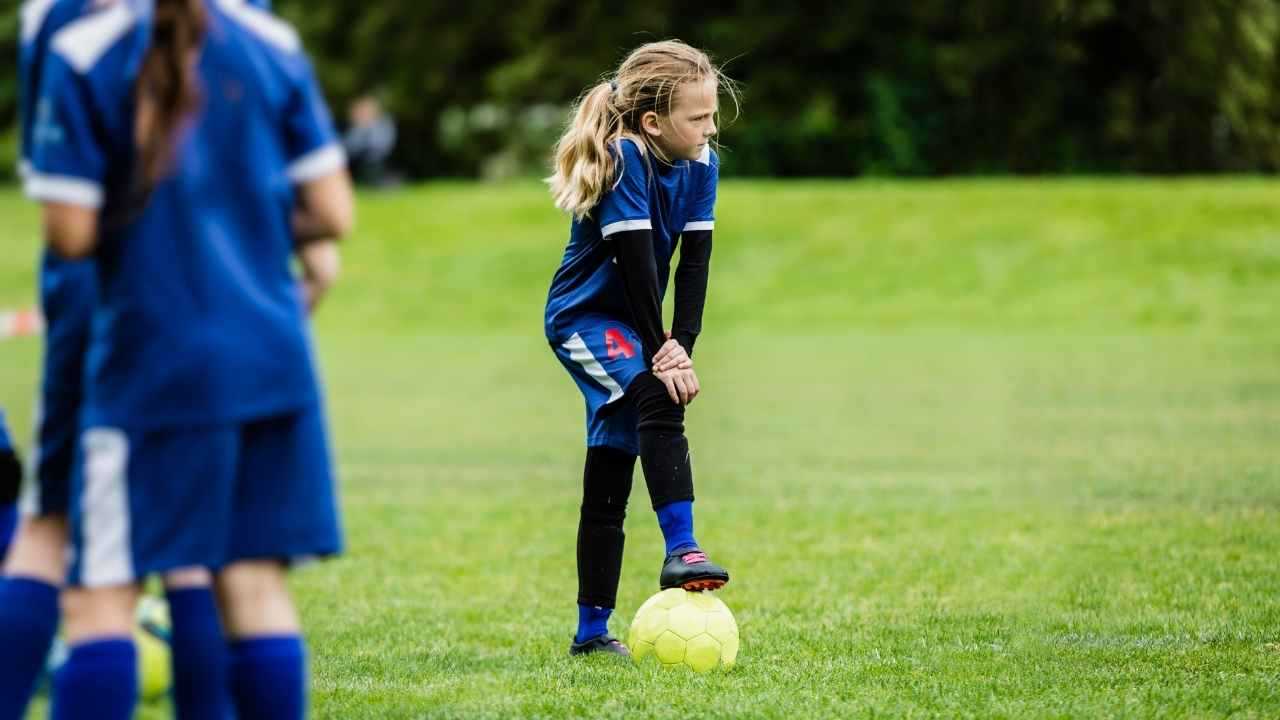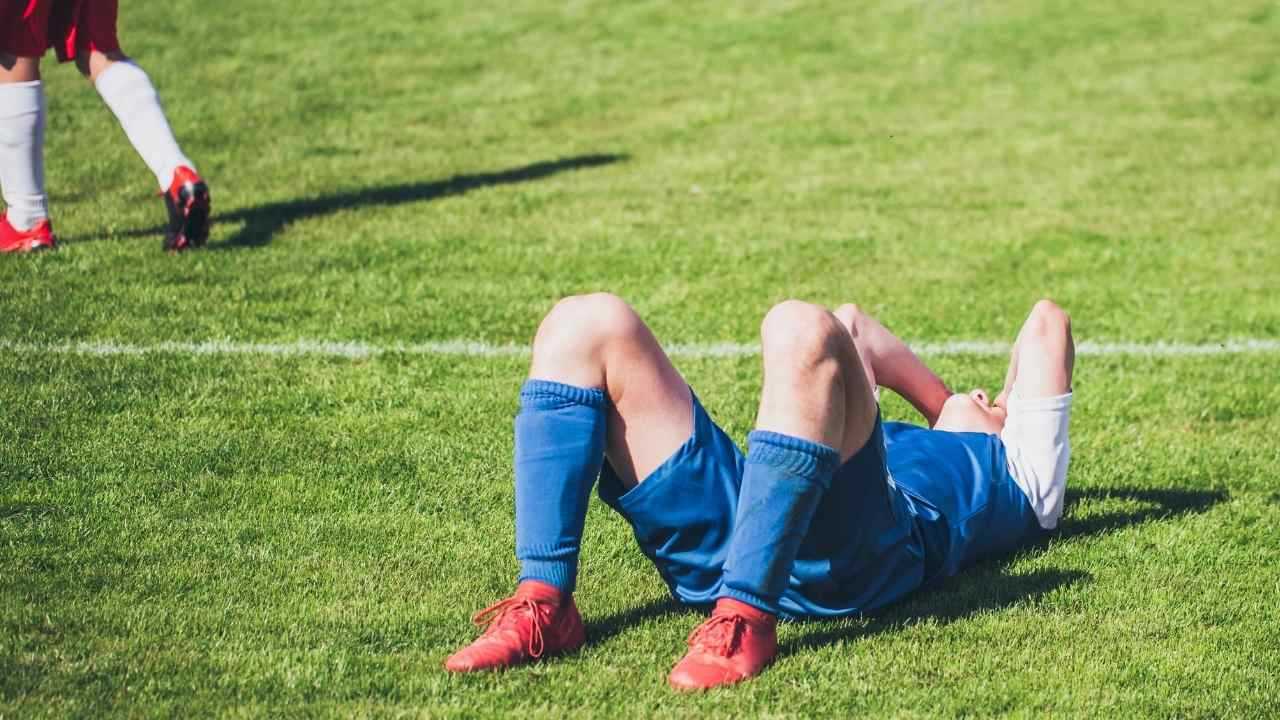How to Foster an Athlete Identity in Girls
An “athlete identity” can help girls stay active for life
Sarah Lindenfeld Hall
| 6 min read

Canva
My 11-year-old daughter has played soccer for more than half her life. At home in the goalie box, her face shines at the end of every game — shut-out or not.
But as we sat in on a virtual meeting for middle school band next year, I wondered what will happen as her interests broaden. Will she stick with soccer — and her other love, basketball? Or will she move in a new direction?
The tween years are a normal time for new interests to arise. But it’s also when the drop-out rate for girls’ participation in sports shoots up. By age 14, girls are leaving sports at twice the rate of boys, according to the Women’s Sports Foundation. (By other measures, it’s up to six times the rate.)
When girls walk off the field for good, they miss out on opportunities to grow stronger, stay active, and develop confidence and life skills like team building, problem-solving and resilience. That’s exactly why coaches and parents need to help them build an “athlete identity,” says Suzanne Sillett, director of education and quality at Coaching Corps, a nonprofit that trains coaches in under-resourced communities. Girls who see themselves as athletes, she says, are less likely to quit.
Why girls drop out
The reasons for the exodus are many, Sillett says. Tween and teen girls start feeling social pressure to be more “feminine,” buying into the outdated notion that getting dirty on the sports field is no longer appropriate.
In some families, their responsibilities at home — such as caring for younger siblings — grow, making it impossible to get to practice. Those at-home tasks could be an even bigger barrier for some girls after the economic challenges of the pandemic, Sillett says.
Body-wise, girls may grapple with the beginning of menstrual cycles or feel self-conscious about their growing breasts. And with puberty comes a drop in confidence. One survey found that confidence levels plunge 30% for girls between the ages of 8 and 14, which can affect their desire to remain in sports.
“Adolescence is tough for boys and girls, but girls face a lot of pressures and they can be self-critical and struggle with their confidence,” Sillett says. “And that may contribute to them dropping out if they don’t have a coach [or parent] who is helping them through that.”
Keeping girls in the game
For Coaching Corps, the way to keep girls in the game is to help them develop an athlete identity. It’s a key part of the training the nonprofit does to help coaches support female athletes.
A girl with an athlete identity labels herself as an athlete. She’ll say, “I am a basketball player,” instead of, “Yeah, I play basketball,” Sillett says. “They see it as part of their makeup. It’s almost seen as a non-negotiable.”
Coaches and parents can help them foster that identity. Here are four ways to help girls stay in the game.
Include parents. “Creating those relationships beyond just the girl is important,” Sillett says. When coaching girls, Sillett has organized parent-daughter games and looked for other ways to get parents involved. When parents are included, they’re more likely to champion their daughter’s desire to play. And when coaches cultivate a relationship with the family, they can potentially head off any barriers to play.
Be empathetic. Listen deeply to each player’s concerns, Sillett says. Give them a voice, ask open-ended questions and be curious about their lives. “They are all coming in with different lived experiences and different challenges,” she says.
And don’t always assume the worst. The girl who asks to go to the bathroom five times during practice might be trying to manage her first period. “Really open up your minds as coaches to what is going on for them outside of practice,” she says.
Create a girl zone. Programs and coaches must champion girls’ participation at the same level as boys, Sillett says, so girls understand they have just as much right to that court — or the field, or the rink — as boys do. That means creating a space where girls have their own time to train and play. And while many programs for younger kids are co-ed, by middle school, all-girls teams should be available, Sillett says. Girl zones, she says, send an important message: that coaches will fight for girls’ right to play and support them along the way.
Focus on development. Help girls recognize how their athletic skills grow over time and support them as they work toward goals, Sillett says. It’s a great way to boost confidence. By focusing on development, says Sillett, girls can see themselves getting better and will want to continue to get better and stay in the game.
Parents are key
When I ask my daughter who she is, she says “soccer player.” Right now, sports are non-negotiable for her. She has an athlete identity. That may shift as she juggles sports and music during the next several years. But she also has the benefit of a big sister — and a mom — who identify as athletes as well.
This kind of family support and modeling is vital, Sillett says.
So, buy that soccer ball your daughter desperately wants for her birthday and kick it around together. “It conveys that I’m going to support you,” Sillett says, “that this is your choice to play, and we’ll figure it out together, as a family, how to make it possible.”





